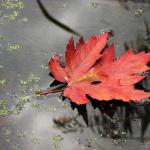From turquoise to olive: the names of the shades of green
One of the three most common colors in nature. Moreover, there are countless shades of it. It is very difficult to list all the names of the shades of green. Indeed, if there are only two hundred and fifty-six of them in the computer RGB color palette, then the human eye is able to distinguish several thousand of them, and some animals see tens of thousands of tones. Therefore, it is worth mentioning only the most common shades.
His majesty is green
To admire the entire palette of green, just walk along the lawn or in the park on a sunny summer or spring day. Then you can see all of it, because thanks to the chlorophyll contained in the leaves, most plants have such an amazing shade.
In the old days, green was considered a symbol of life. It is noteworthy that in Christianity (Orthodoxy) he was a symbol of many saints and blessed ones. Therefore, icons were often painted in green colors. And in Islam in general, green is the sacred color of religion itself, it is colorfully sung in the Koran.
In printing, in order to get a full-fledged green color, you must either mix one hundred percent of blue and the same amount of yellow (for CMYK), or set the value of green - two hundred and fifty-five (for RGB). And the color itself has coordinates # 00FF00.
The most common shades of green
The names of all shades of green are very difficult to count, because there are about several thousand of them. However, you can focus on the most common of them, which, in turn, have a lot of their own colors. 
So, the most common names for shades of green are light green, turquoise, aquamarine, emerald, olive and pistachio.
Light green
Light green color (coordinates # 99ff99), or, as it is correct to say, yellow-green, is familiar to everyone. Its "popular" nickname comes from an annual herb called lettuce. 
Light green color refers to light shades of green, just slightly different from the classic tones of greens. In English, this color is called light green.
In turn, the light green tone has its own shades of green. The palette, the names of these shades have several dozen names, and even more nameless shades. Lime, French, green and electric; pear chartreuse (regular and yellow), neon green and meadow green are just a small list of the most famous lime colors.
It is interesting that psychologists have experimentally proved that only light green color and its shades tend to have a positive effect on the development of the psyche of preschoolers. Perhaps for this reason, illustrations for children's books and computer games are full of light green colors.
Aquamarine and turquoise
Unlike light green, aquamarine (coordinates # 7FFFD4) and turquoise (coordinates # 30D5C8) are not directly green: they are transition colors. Their names are also very diverse, especially when you consider that some of the colors belong to the blue palette, and some to green. 
So, there are light, dark, pale, bright and medium turquoise colors. It is impossible not to mention the color of electric blue and turquoise pearls.
It is worth noting that it is often considered one of the shades of turquoise.
Interesting fact: both shades - turquoise and aquamarine - are named after natural minerals.
Emerald
If the light green color is most positively perceived by preschoolers, then the emerald color (coordinates # 50C878) is one of the most pleasant for adults. And although it also belongs to the blue-green range, it stands apart from turquoise and aquamarine. Although, just like these names for shades of green, it comes from the name of the mineral - emerald. 
Unlike the above colors, emerald color does not have such a huge variety of names for its tones. Like turquoise, its shades range from light, bright and similar to dark emerald. There are also distinct tones such as jade, dark spring green and sea red.
Olive and pistachio
The names of the shades of green, such as olive (coordinates # 808000) and pistachio (coordinates # BEF574), refer to noteworthy that they both derive from the names of the plants. However, unlike light green, they are darker. 
The olive tone is called correctly. Its reference is the color of the fruit of the olive tree. Typically, to achieve this hue, yellow and black tones are added to green. Sometimes the olive color palette can be very close to beige tones.
Olive tones include not only dark and light varieties, but also colors called olive wreath, olive feast and whisper of the forest, heavenly freshness, noise of herbs (although the last tone can be likewise attributed to pistachio color).
Pistachio color is quite similar to olive, but is much lighter and is often considered a shade of it. Its tones are very close to beige and light brown.
There are different shades of green. Unfortunately, not everyone has a name. In most cases, for convenience, each color and its shade has a certain numerical value, knowing which, it is easy to find the tone in a catalog or reproduce it on a computer in one of the graphics programs. However, in order to do this, one must initially know the basic shades of green, since all others are simply varieties of them.




